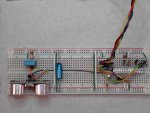My 2 cents... take this with a bag of rock salt or two, I've two microcontrollers and plenty of opinion about them and others -- but I've never actually USED one yet!
I've looked at Arduinos and BASIC Stamps -- Arduinos are remarkably expensive for what they can do, IMO -- for $30 one should be able to drive a color LCD at 320x240. That's well beyond an Arduino's capabilities. BASIC Stamps (the I and II models) probably are about the same as an Arduino, and last time I looked (admittedly it's been a couple years), I seem to recall them being nearly twice as expensive to get going! I looked at that Propeller thing, saw that the programming manual was THREE HUNDRED PLUS PAGES, and once I had recovered my jaw from the basement and my eyebrows from orbit, I never looked at it again. That is NOT a beginner's tool, with that kind of literature!
I recently purchased -- for us$5 -- a nifty and relatively powerful device, the new Stellaris Launchpad. (I had grabbed it at the introductory pricing point; IIRC it's up to more like us$15 now.) Unfortunately, to shave pennies off the price, it shipped without a few features I would've liked, such as (eg) real PWM and an MMU. That second one was a biggie -- I'd wanted to build a little bitty computer with it, and no MMU means no extra memory -- the onboard RAM is more cramped than the smallest apartment in NYC. Oh well, I guess I'll find a use for it *someday*... although having 3.3v logic levels (rather a bit unfriendly IMO) doesn't help, either...
And then there's my PICAXE 08M starter kit, which I got to build something from a Make: Magazine article; one of many projects I've wanted to do that didn't happen. It looks incredibly simple to use, it was dirt cheap, and if I ever get around to sitting down with it and DOING SOMETHING FOR PETE'S SAKE, I think I'll have found a new friend

...just something I've been kicking around in my head: any chance that a PICAXE (particularly anything other than the X/X2 parts) can handle a graphic LCD? I got a nifty 128px square model -- a PowerTip PG128128-A, to be specific -- off eBay awhile back, and I'm thinking of doing some nifty stuff with it, if I can make it dance with PICAXE... if that's thread hijacking, I can start a new thread for it. Just, I've done a bunch of those already, and I don't want to start another only to find I've wasted everyone's time.

